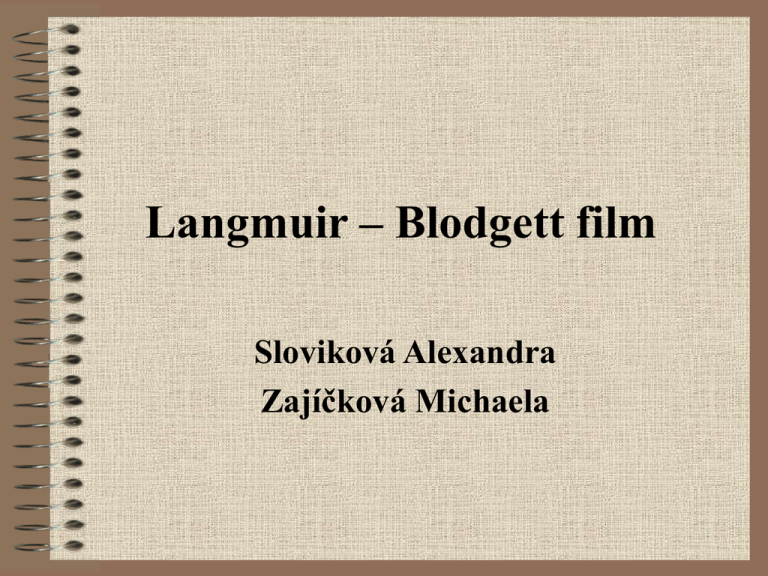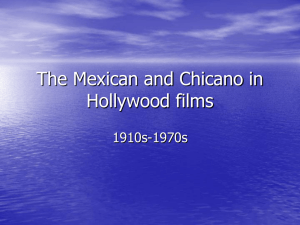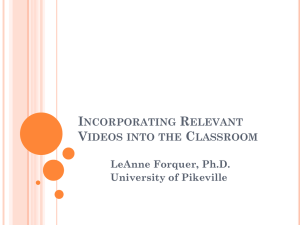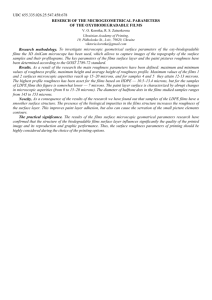saska + misa2
advertisement

Langmuir – Blodgett film Sloviková Alexandra Zajíčková Michaela History • 17th century First discovery of optic efect • 19th century The beginning of preparation of the thin layers • 20th century (70th years) The expansion of plasma technologies • 20th century (80th years) Development of Lamgmuir – Blodgett films Why study molecular orientation in thin films? • interfacial properties (optical, electronic and mechanical) • molecular interactions • organizational model for complex Photoresist systems “Chemically” cleaned silicon wafer Silicon oxide “barrier” layer Introduction • Langmuir – Blodgett films are monofilms or multifilms on solid substrate. • Molecules form a monolayer at the interface airliquid • They are nanomaterials • The films are layers at scale 0,1 – 0,001 nm ~ 1 nm • When the molecules are first spread on the water surface, they are loosely packed and form a socalled gas phase. • Increasing the surface pressure translates as a transition to a liquid phase. • Further increases in pressure bring about a last compressibility change that is associated to a liquidsolid phase transition. Surface pressure (mN/m) Monolayer Phases Solid phase Liquid phase Gas phase Molecular area (nm2/molecule) • A barrier on the water surface pushes and compacts the molecules. • Spreading amphiphile molecules on a water surface yields monolayers or films where the hydrophobic segments stem at the water/air interface. • Films with tailored stability, orientation of molecules or phase transition can thereby be transferred to the substrate. Characteristics of substrate • Hydrophilic: – Glass – Aluminium, chromium, – Wafer • Hydrophobic: – trimethylchlorsilane Film transfer Water Water subphase • Vertical – This technique is actual for highly hydrophobic molecules. • Horizontal – This technique is suitable for transfer of very stif films. Langmuir – Blodgett films • Vertically prepared films • 3 types: – repeated submergence – type X – repeated emergence – type Z – switching both types – type Y X Z Y References • [1] doc.RNDr. Vladimír Čech, Ph.D. Lectures • [2] http://isi4.isiknowledge.com\portal.cgi • [3] http://www.sciencedirect.com • [4] http://google.com • [5] http://nanotechnologweb.org











